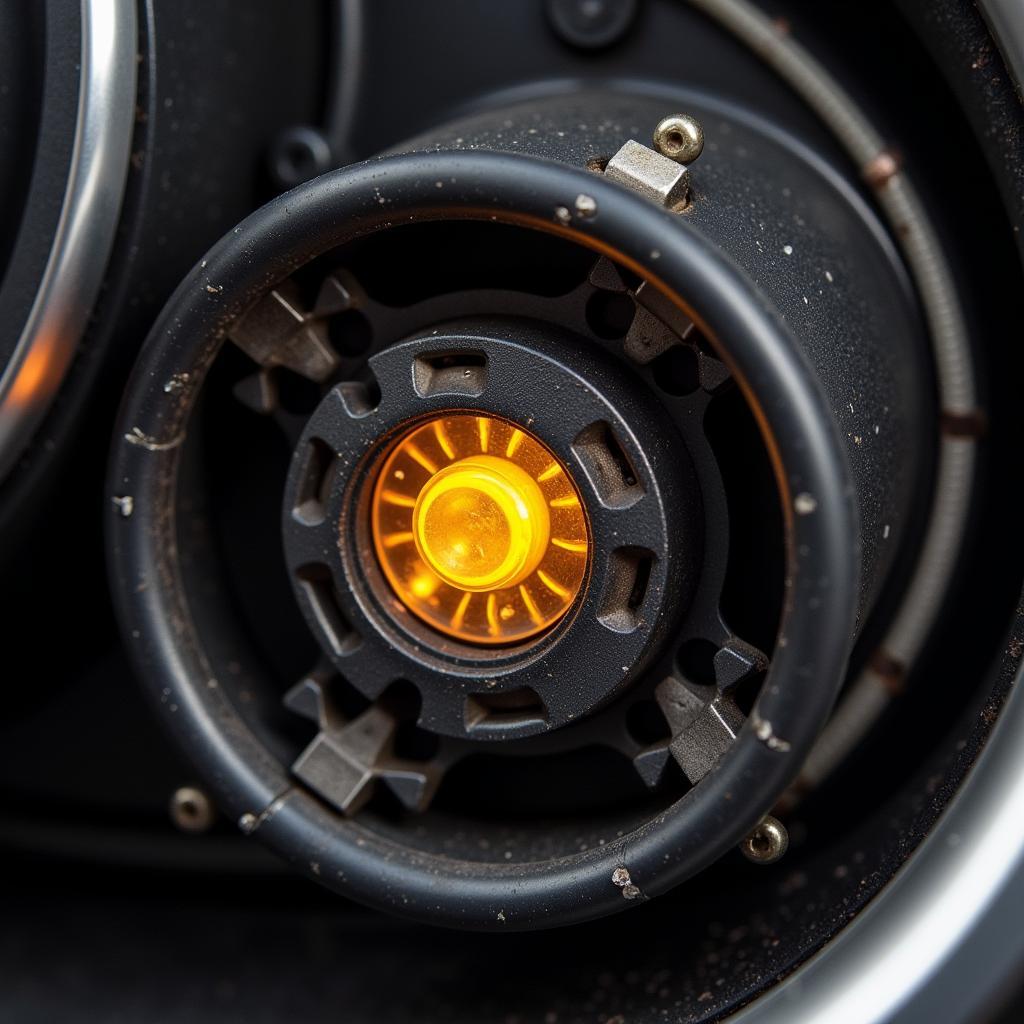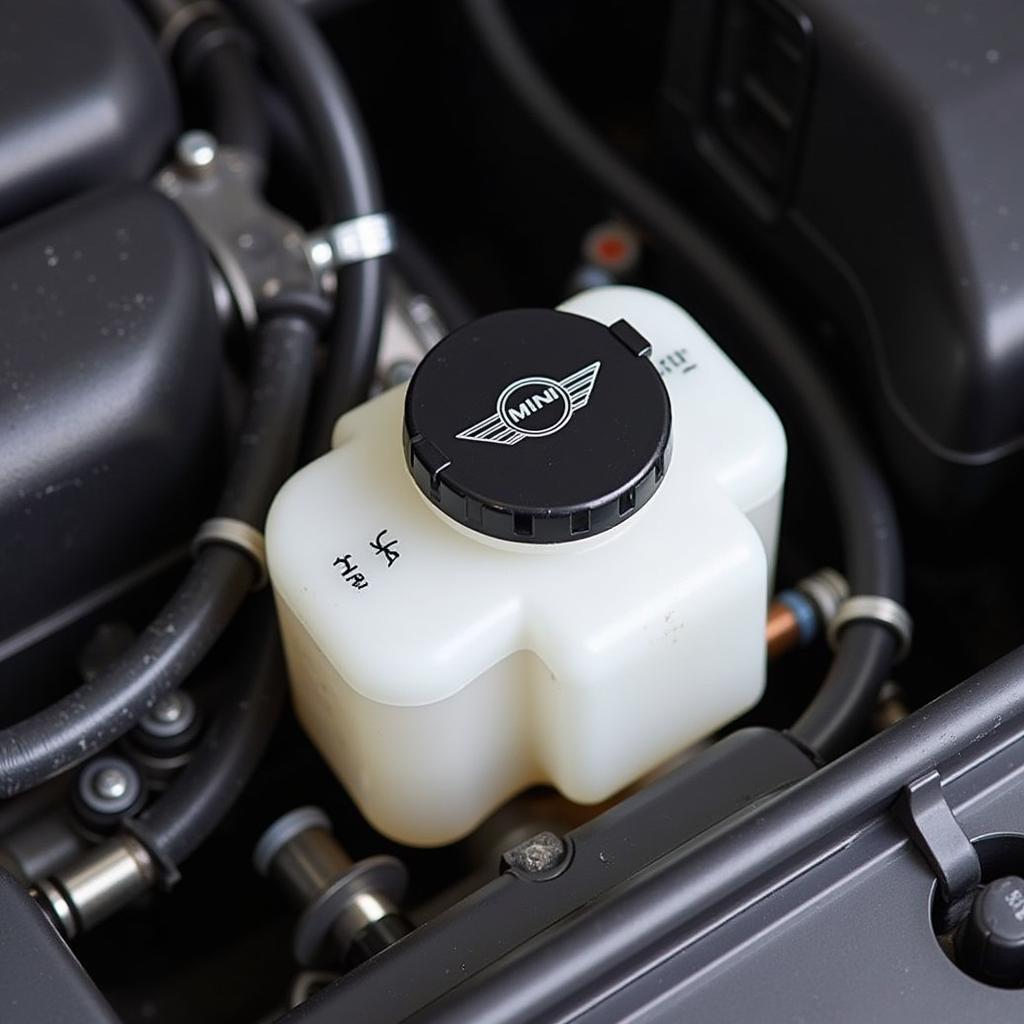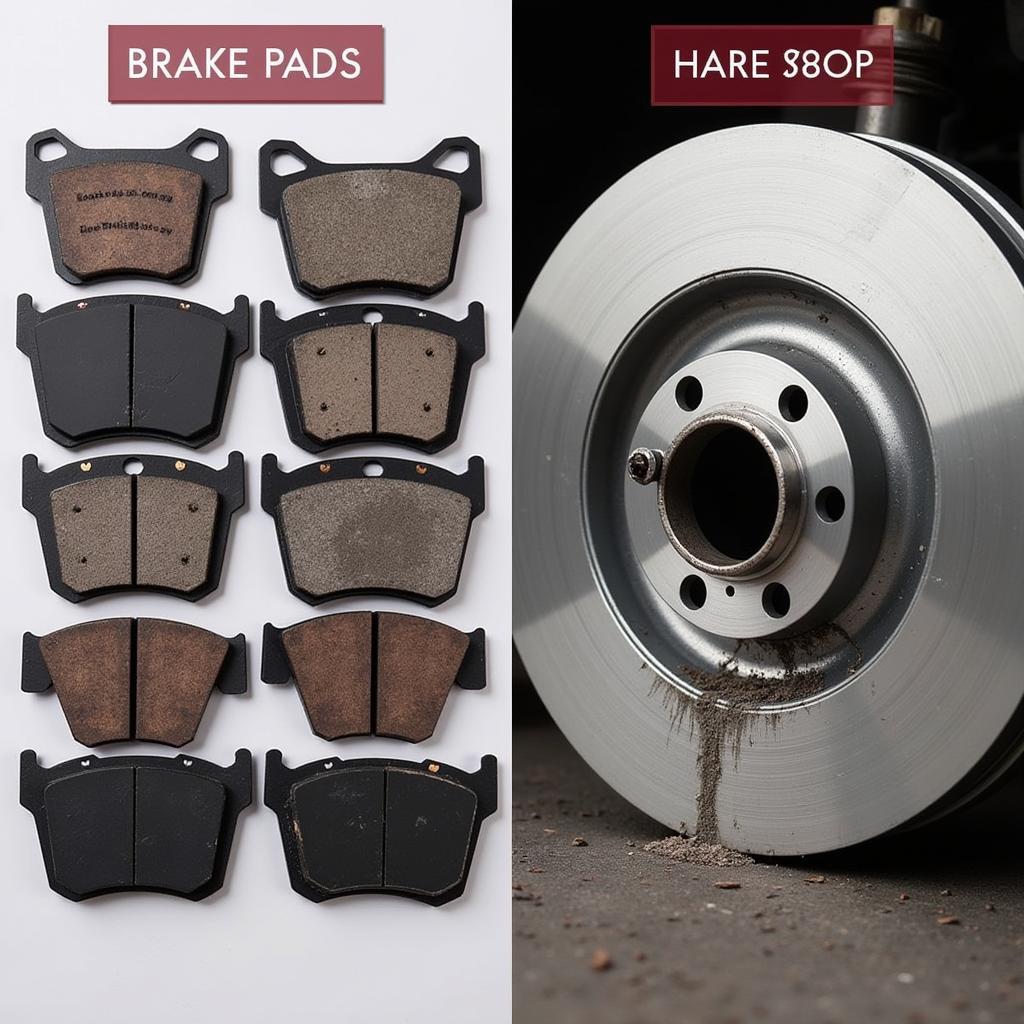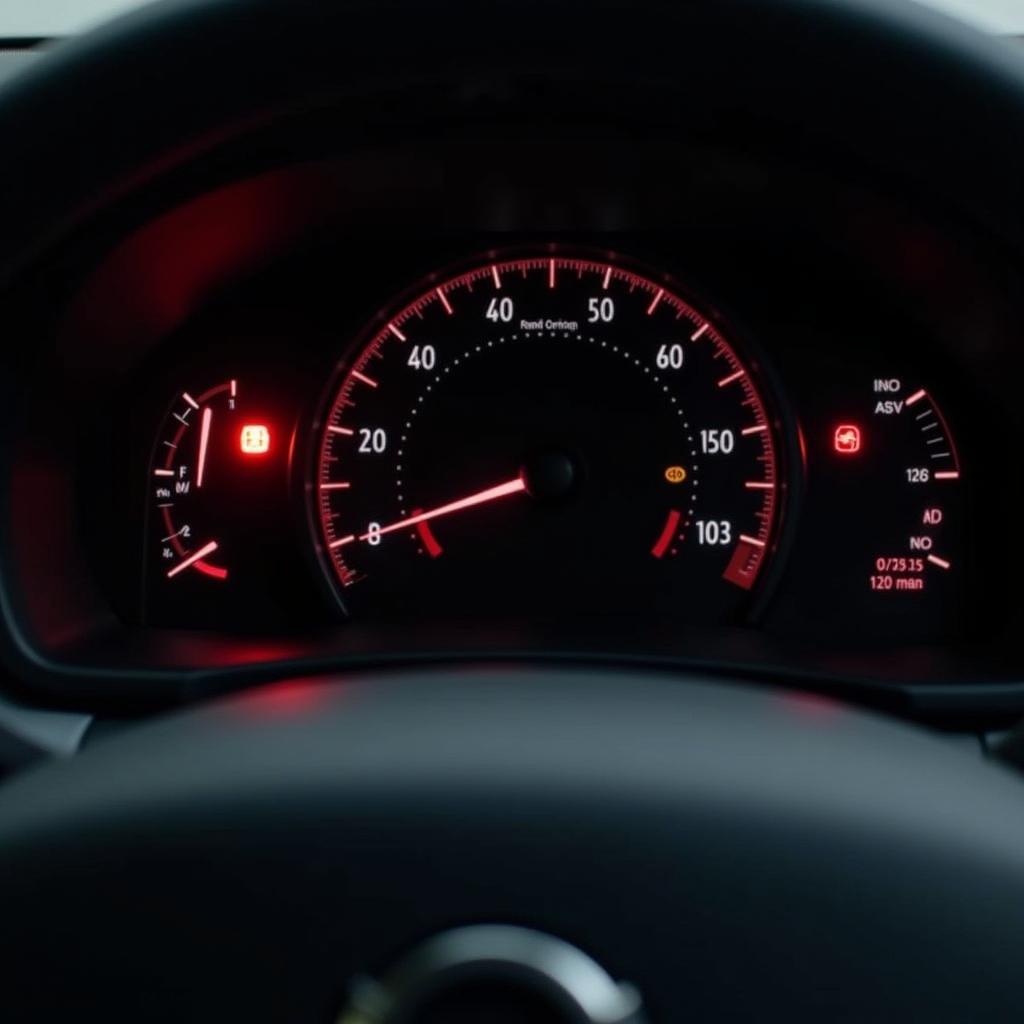The yellow brake warning light on your Mini Cooper can be a cause for concern, but it doesn’t always mean a trip to the mechanic is necessary. Understanding why this light appears and what steps to take can save you time, money, and unnecessary stress. This article provides a comprehensive guide to help you decipher the meaning of the yellow brake warning light and what actions to take for a solution.
Decoding the Yellow Brake Warning Light
Unlike the red brake warning light, which typically signifies a serious issue requiring immediate attention, the yellow brake warning light usually indicates a less critical problem. In most Mini Coopers, the yellow brake warning light is associated with the brake pad wear sensors.
 Mini Cooper Brake Pad Wear Sensor
Mini Cooper Brake Pad Wear Sensor
These sensors are small metal tabs embedded within the brake pads. When the brake pad material wears down to a certain level, the sensor makes contact with the brake rotor, completing a circuit and illuminating the yellow warning light on your dashboard. This serves as a timely reminder that your brake pads need replacing soon.
Beyond Worn Brake Pads: Other Potential Causes
While worn brake pads are the most common reason for the yellow brake warning light to activate, several other factors could be at play:
- Malfunctioning Brake Pad Wear Sensor: A faulty sensor can trigger the warning light even if your brake pads are in good condition.
- Low Brake Fluid Level: Brake fluid is essential for proper braking performance. A low fluid level, often due to a leak, can trigger the yellow warning light.
- Issues with the ABS System: While less frequent, a problem with your Mini Cooper’s Anti-lock Braking System (ABS) can also trigger the yellow brake warning light. This might be accompanied by an ABS warning light.
What to Do When the Yellow Brake Warning Light Turns On
-
Assess Your Brake Pedal Feel: Pay close attention to how your brake pedal feels. If you notice any of the following, it’s crucial to address the issue promptly:
- A soft or spongy brake pedal
- Increased stopping distance
- Unusual noises when braking, such as grinding or squealing
-
Check Your Brake Fluid Level: Park your Mini Cooper on a level surface and locate the brake fluid reservoir. The reservoir is typically translucent, allowing you to visually inspect the fluid level. If the fluid level is low, it’s crucial to have the system inspected for leaks and have the fluid topped up by a qualified mechanic.
 Mini Cooper Brake Fluid Reservoir Location
Mini Cooper Brake Fluid Reservoir Location
- Schedule an Inspection: If you suspect worn brake pads, a faulty sensor, or any other issue with your braking system, schedule an inspection with a trusted mechanic specializing in Mini Coopers.
mini cooper brake warning light symbols can be tricky to decipher. A professional can accurately diagnose the problem and recommend the necessary repairs.
Don’t Ignore the Warning Light
While the yellow brake warning light might not always indicate an emergency, ignoring it can lead to more significant and costly problems down the line.
“Addressing brake issues early is crucial,” says master mechanic John Miller, who has specialized in European cars for over 20 years. “Worn brake pads, if left unattended, can damage the rotors, leading to more expensive repairs. Moreover, a compromised braking system puts your safety at risk.”
 Worn Brake Pads and Damaged Rotor
Worn Brake Pads and Damaged Rotor
Preventing Future Brake Warning Lights
- Adhere to a Regular Maintenance Schedule: Regularly scheduled maintenance, including brake inspections, can help identify potential issues before they escalate. Consult your Mini Cooper’s owner’s manual for recommended maintenance intervals.
- Adopt Smooth Braking Habits: Avoid harsh braking whenever possible. Gradual braking reduces wear and tear on your brake pads and rotors.
- Be Mindful of Driving Conditions: Driving in heavy traffic, hilly terrain, or frequently carrying heavy loads can put additional strain on your braking system, leading to faster wear and tear.
Frequently Asked Questions
Q: Can I continue driving with the yellow brake warning light on?
A: While you might be able to drive for a short distance, it’s not recommended. Driving with worn brake pads reduces your braking efficiency and can damage other components of your braking system.
Q: How much does it cost to replace brake pads on a Mini Cooper?
A: The cost varies depending on factors such as the model year, type of brake pads, and labor costs in your area. Typically, brake pad replacement for a Mini Cooper can range from $150 to $400 per axle.
Q: Can I replace my Mini Cooper brake pads myself?
A: While it’s possible to replace brake pads yourself, it’s generally recommended to have this service performed by a qualified mechanic. Brake systems are critical safety components, and improper installation can have serious consequences.
Conclusion
The yellow brake warning light in your Mini Cooper is a valuable indicator of your vehicle’s health. By understanding its potential causes and taking appropriate action, you can ensure optimal braking performance and, most importantly, maintain the safety of you and your passengers. Remember, timely maintenance and a proactive approach to your car’s well-being are always better than an expensive repair down the road. If you are unsure about any aspect of your Mini Cooper’s braking system, resetting mini brake pad warning light is best left to the professionals.

